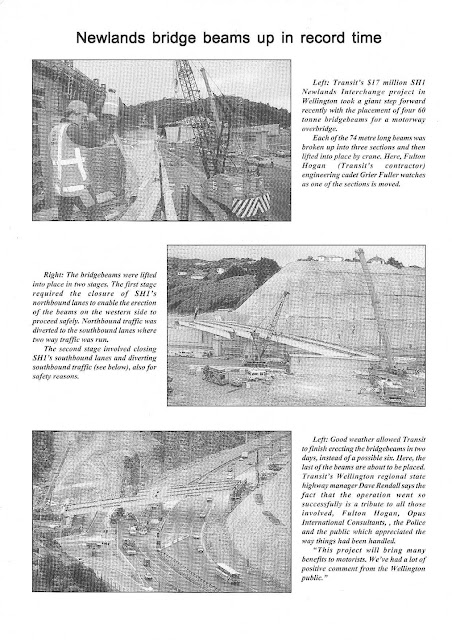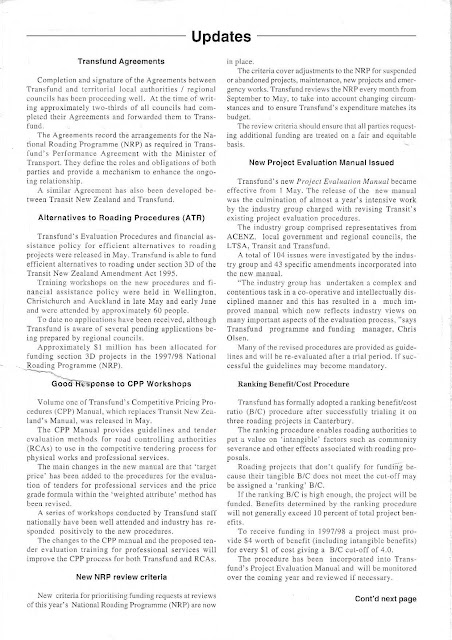The July 1998 edition of InTransit primarily focused on repairs to flood damaged highways in Taranaki, Waikato, Bay of Plenty, Auckland and Northland. However, it also included a summary of state highway funding under the 1999 National Roading Programme, funded by Transfund NZ at the time.
Highlights were:
- $444.2m of funding for the year for Transit NZ for all of its work, around half of all funding going to Transit NZ, the remainder going to local authorities for local roads and public transport.
- $221m of Transit's funding was for state highway maintenance
- The funding threshold for new projects was maintained at a BCR of 4:1.
- Projects separated into Category 1 (approved now) and Category 2 (funding approved dependent on finalising resource consents, property purchases).
- Design of Grafton Gully upgrade on SH16
- Structural upgrade of Auckland Harbour Bridge to meet seismic standards
- Development of ATMS on Auckland's motorway network
- SH2 Sargants Corner realignment, Hauraki District
- SH5 Rotorua Stockpile Curves realignment
- SH3 Awakino realignment
- Four-laning of Old Taupo Road Rotorua (SH5)
- Route J, Tauranga (SH2)
- White Pine Bush South realignment SH2, Hastings District
- Glengarry Hill realignment SH5, Hastings District
- SH3A South Clearview Curves realignment, New Plymouth District
- Urenui Bridge replacement SH3, New Plymouth District
- Investigation/planning for SH1 4-laning, realignment from Plimmerton to Pukerua Bay, Porirua City
- Maisey-Bronte realignment SH60, Tasman District
- Candy's Bend to Starvation Point realignment, SH73
- SH1 Hawkswood Deviation near Cheviot
- Six single-lane bridge widenings SH6 Makaroa
- SH1 Gore Main Street improvements
- SH1 Fairfield Motorway Dunedin (extension of Southern Motorway beyond Green Island)





































